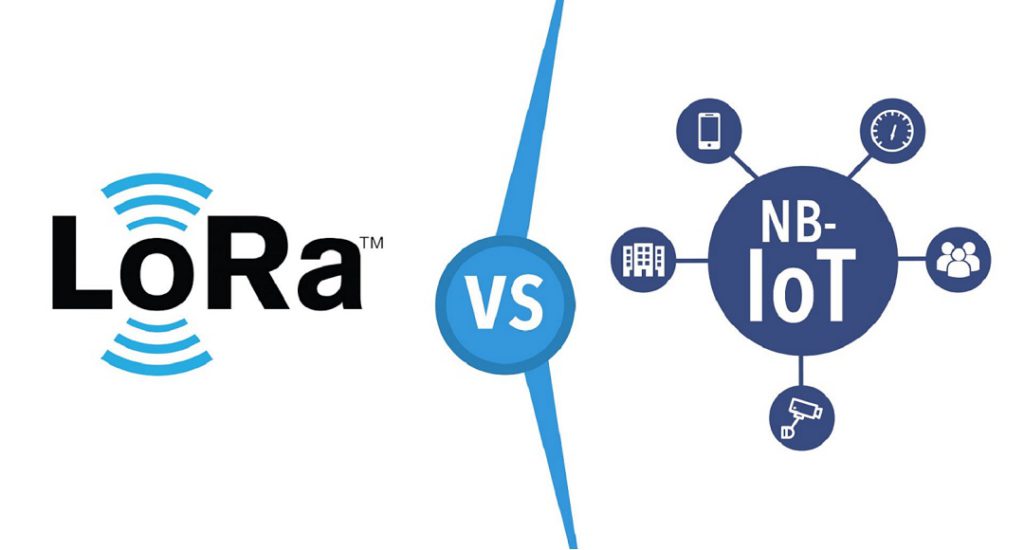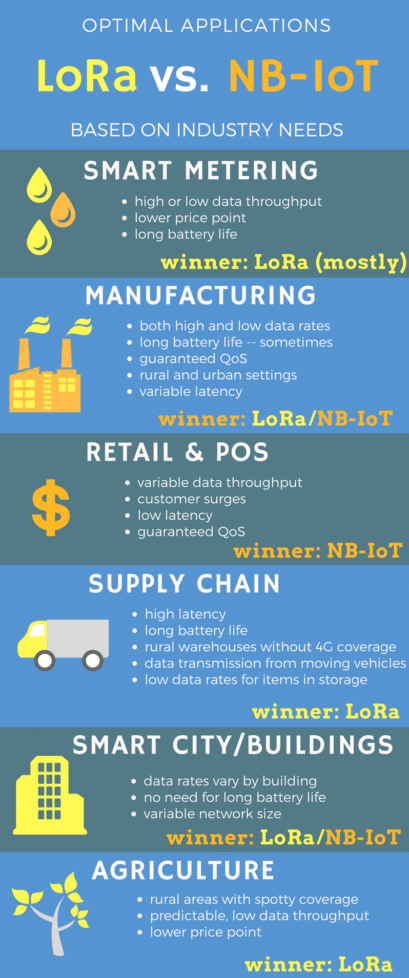
As the amount of connected devices grows, new technology standards have progressed to manage the expanding IoT scope. While smartphones utilize the cellular system for their data, several IoT devices (for example, a smart water meter) only need to shift small volumes of data. Relying entirely on cellular or satellite networks would be costly and use much battery power for most devices. Furthermore, WiFi and Bluetooth networks are not constantly excellent or cost-effective solutions. Most IoT devices don’t require constant contact with a cellular network, so they need a new type of Lpwan Technologies.
LPWAN stands for Low-Power Wide Area Network, a wireless network intended to efficiently join smart devices over long ranges, usually at a low bit rate. LPWANs are perfect for IoT devices that don’t want to handle large volumes of data or bypass more expensive gateway technology. It can incorporate smart meters, consumer products, and sensors.
Many technology studies compare LoRA and NB-IoT technologies as battling out for dominance in the IoT market. These technologies are a couple of sections within an emerging technology ecosystem. Related to WiFi and Bluetooth, they will most likely differ in various corners rather than straight compete with each other. This article will dip more deeply into the skills, costs, durability, maturity, and differentiators of NB-IoT and LoRa-based technology.
What are LoRa and NB-IoT?
Lora and NB-IoT both function within Lpwan technologies. They are two significant standards for low-power IoT devices.
LoRaWAN is a low-power IoT protocol that comprises the LoRa radio technology, allowing for open, reliable, and economical network deployment. By contrast, NB-IoT is a licensed LTE radio technology offering low latency and robust security at a steeper price point.
Key Differences
They developed LoRa and Nb-IoT Standards to build security, power efficiency, and interoperability for IoT devices. Each emphasizes Two-way communication (meaning the network can send data to the IoT device, and the IoT device can send data back), and both designs scale well, from a few devices to millions of devices.
| Technology Parameters | LoRaWAN | NB-IoT |
|---|---|---|
| Bandwidth | 125 kHz | 180 kHz |
| Coverage | 165 dB | 164 dB |
| Battery Life | 15+ years | 10+ years |
| Peak Current | 32 mA | 120 mA |
| Sleep Current | 1 µA | 5 µA |
| Throughput | 50 Kbps | 60 Kbps |
| Latency | Device Class Dependent | <10 s |
| Security | AES 128 bit | 3GPP (128 to 256 bit) |
| Geolocation | Yes (TDOA) | Yes (In 3GPP Rel 14) |
| Cost Efficiency | High | Medium |
Latency :
The major differentiator of LoRa and NB-IoT is their latency. Here’s a fast refresher on network latency: networks and devices interact with each other by utilizing data packets. But certain data packets don’t constantly transfer because it picks up battery power and network coverage. Latency is the time lag in transferring data after performing a change request. A low latency device “checks in” with the network more frequently than a high latency device.
For instance, a smart sensor identifies that a pipe has burst and needs to alert the network. If this sensor is high latency, it often transfers data to the network, and it strength be a few hours before the system gets the alert. If the sensor is low latency, the web will receive the warning much sooner.
Location / Density
Because LoRa devices use gateways, they run well in remote or rural areas without 4G coverage. They use an unlicensed spectrum to interact with the network. They also go well when they are in motion (for instance, on a truck, plane, or ship) making them well adapted for supply chain and transportation applications. Lora’s geolocation is non-GPS, so devices give location services without massive battery usage.
NB-IoT devices don’t require a gateway, and they rely on 4G coverage unless using spectrum within LTE, GSM spectrum, or “standalone,” which leads to unused frequency within LTE guard bands. It means that things(devices) with NB-IoT chipsets work better in indoor applications and compact urban areas. NB-IoT uses GPS technology for geolocation.
Power Usage & QoS
NB-IoT and LoRa are both invented for low-power devices; NB-IoT’s lower latency indicates that it uses battery fluid faster than LoRa. The trade-off is that it can ensure a better quality of service (QoS) than LoRa due to quicker response times. NB-IoT also owns much higher data rates than LoRa.
What are optimal methods for each Lpwan technology?
Depending on the requirements of an application, one technology may be more proper than another. For most applications, the most notable considerations are latency, cost, battery life, and coverage. In this position, NB-IoT and LoRa serve different purposes.

Smart metering:
Most meters process only reasonable data measures each day, so LoRa is most suitable for most significant applications, considering that the cost of establishing a gateway is not restrictive. NB-IoT is a good choice for uses that require extra constant communication.
Manufacturing:
Industrial automation takes various forms, and there is no one answer for this space. NB-IoT is the best fitter option for manufacturing uses that require extra constant communication and assured QoS, while LoRa is more desirable for lower-cost sensors and more extended battery life. Both are beneficial in several environments.
Smart city/buildings:
Lora is the more suited option for most smart buildings due to the easier installation of gateways. However, buildings have their current supplies and therefore have a more limited need for LoRa’s battery efficiency, so NB-IoT may be a better choice for smart buildings with extremely high data throughput and high-security facilities. NB-IoT is also fitted better for smart city networks that combine hundreds of buildings, whereas LoRa is fitter for a single-building application.
Agriculture:
Irregular cellular network coverage in farm areas makes LoRa the clear choice since LoRa doesn’t require 4G. Lora acts powerfully to track agricultural indicators, such as water usage, soil pH, and temperature gauges, which don’t turn rapidly or require immediate responses. Not only that, LoRa’s more economical price point is a top-selling point for farmers.
How mature are the LPWAN technologies?
Lora had an early two-year advance, and highly integrated LoRa modules are now obtainable on the market for a competitive price, with added benefits already in development. Lora has already recognized the IoT network industry standard for several countries, including the United States. NB-IoT choices are new but are already obtaining traction in industry spaces that aren’t a good fit for LoRa. Technology as whole demands to evolve quickly due to the vast market demand.
In the end…
In conclusion, there is no definite winner between NB-IoT and LoRa standardized devices. They describe different needs.
We train in staying ahead of the telecom technology curve. Get in touch with us by emailing info@bridgethings.com.
